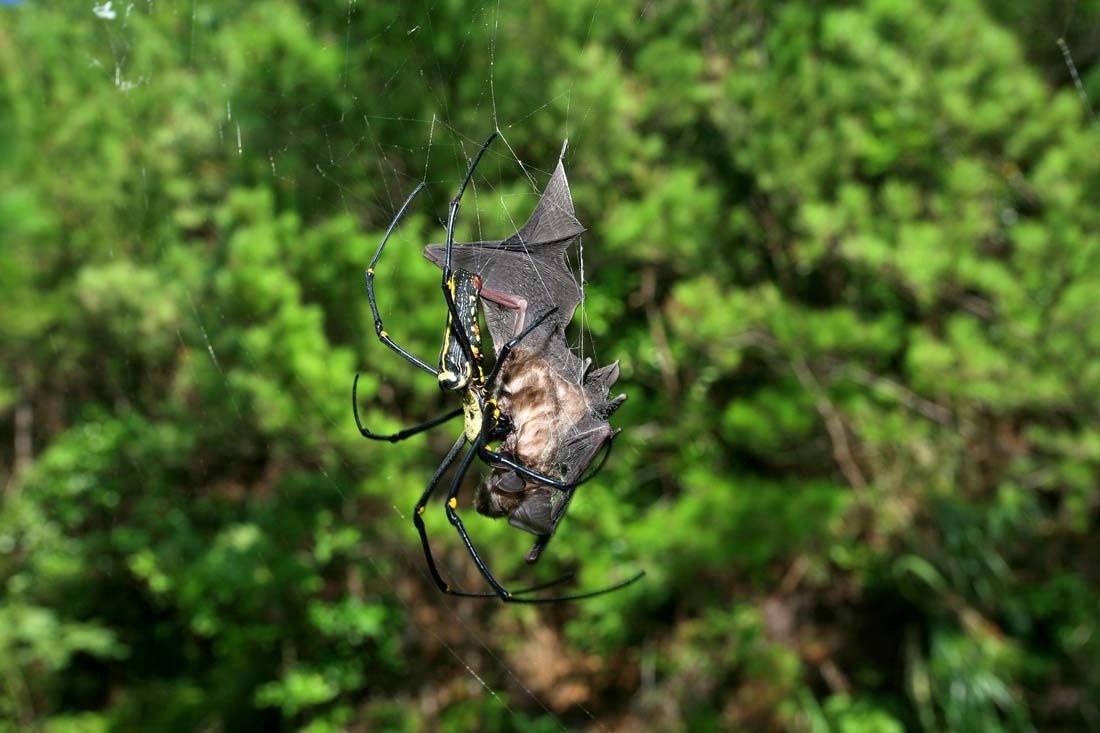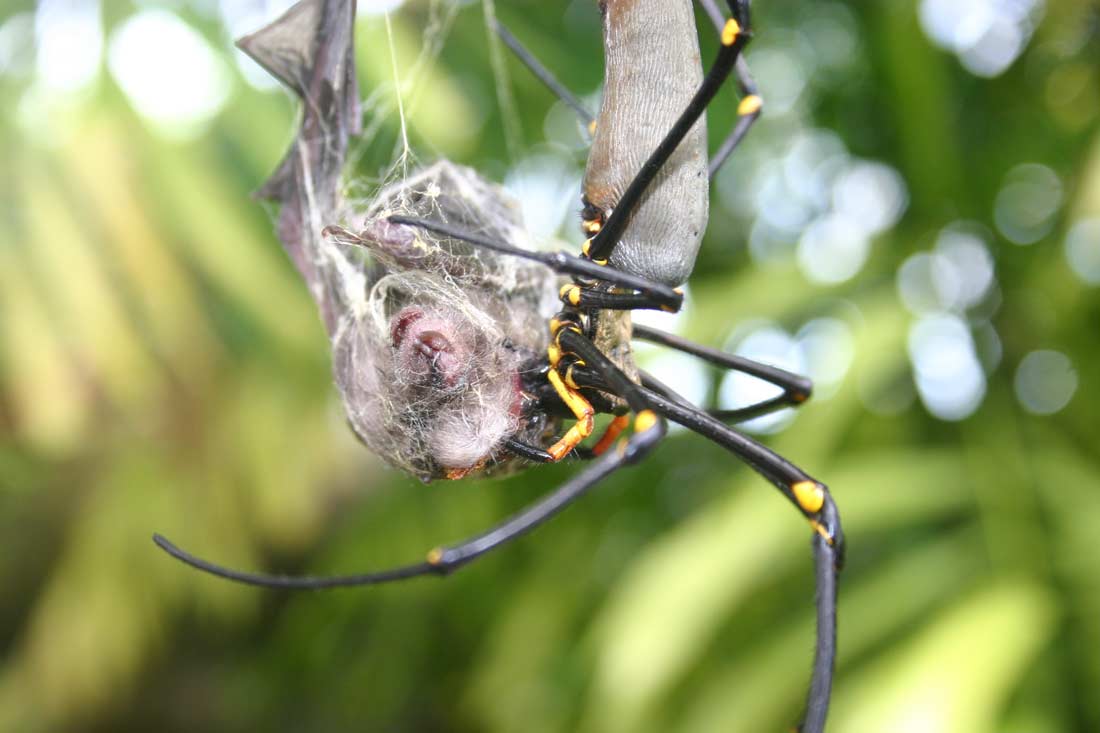Bat-Eating Spiders Are Everywhere, Study Finds

There's only one place in the world to escape bat-catching spiders: Antarctica. These arachnids ensnare and pounce on bats everywhere else in the world, researchers say.
Bats rank among the most successful groups of mammals, with the more than 1,200 species of bats comprising about one-fifth of all mammal species. Other than owls, hawks and snakes, bats have few natural enemies.
Still, invertebrates — creatures without backbones — have been known to dine on bats. For instance, giant centipedes in a cave in Venezuela were seen killing and eating bats, and the arachnids known as whip spiders were spotted feeding on dead bats in caves of the Caribbean. Cockroaches have been observed feeding on bat pups that have fallen to the floor of caves.
The findings were detailed online March 13 in the journal PLOS ONE, by Martin Nyffeler, a senior lecturer in zoology at the University of Basel in Switzerland, and Mirjam Knörnschild, of the University of Ulm in Germany.
Spider-eat-bat world
Accidental deaths of bats in spiderwebs were known as well, but were thought to happen very rarely. Still, spiders are known to occasionally dine on a variety of vertebrates — creatures with backbones. For instance, fishing spiders capture and devour fish and frogs; some species of wolf spiders, huntsman spiders, tarantulas and related spiders have been seen killing and eating frogs and lizards; and tarantulas and comb-footed spiders have apparently fed on snakes and mice. There are also numerous reports of spiders killing other flying vertebrates, snagging birds with large orb webs.
Recent studies of a web-building spider species (Argiope savignyi) and a tarantula species (Poecilotheria rufilata) both killing small bats led researchers to suggest that bat captures and kills due to spiders might be more frequent than previously thought. So they analyzed 100 years' worth of scientific reports, interviews of bat and spider researchers and the staff of bat hospitals, and scans of image and video sites. The search revealed 52 cases of bat-catching spiders worldwide. [See Photos of Bat-Eating Spiders in Action]
Sign up for the Live Science daily newsletter now
Get the world’s most fascinating discoveries delivered straight to your inbox.
Giant webs
Approximately 90 percent of known bat-catching spiders live in the warmer areas of the globe, in the third of the Earth surrounding the equator. About 40 percent live in the neotropics — the whole of South America, and the tropical regions of North America — while nearly a third live in Asia and more than a sixth live in Australia and Papua New Guinea.
Eighty-eight percent of the reported cases of bat catches were due to web-building spiders, with giant tropical orb-weaving spiders with a leg-span of 4 to 6 inches (10 to 15 centimeters) seen catching bats in huge, strong orb-webs up to 5 feet (1.5 meters) wide.
In instances seen in Costa Rica and Panama, the spiders had built their webs near buildings inhabited by bat colonies. Bat-catching via spiderwebs was also witnessed particularly often in the parks and forests of the greater Hong Kong area. Future research may investigate whether the huge webs that sometimes block the entrances of tropical bat caves in east and southeast Asia and the neotropics may occasionally snag any members of the giant swarms of bats that emerge from the caves at night. [Photos: Creepy, Crawly & Incredible Spiders]

The other 12 percent of cases of spider kills of bats were from spiders that hunt without webs. For instance, tarantulas were seen eating small bats in tropical rainforests in Peru and eastern Ecuador and on the forest floor in northeastern Brazil. A reddish parachute tarantula (Poecilotheria rufilata) was also seen predating on a small bat in Kerala, India, while a huntsman spider (Heteropoda venatoria) was observed capturing and killing a small bat in a shed near Kolkata, India. An attempt by a large fishing spider (Dolomedes triton) to kill a bat pup was also witnessed below a bridge in Indiana.
The victims
Most bat prey of spiders are small or juvenile insect-eating bats, and usually are among the most common bat species of their areas. Bats entangled in webs were usually 4 to 9.5 inches (10 to 24 cm) in wingspan, including some of the smallest species of bats in the world, and they sometimes died of exhaustion, starvation, dehydration or overheating — but there were many cases where spiders were seen actively attacking, killing and eating these victims.
Bats are likely capable of detecting spiderwebs via echolocation, their biological sonar. Even if bats do collide with spiderwebs, only the strongest traps are likely capable of withstanding the energy of such an impact without breaking. As such, bat captures are likely rare.
Still, as scarce as spider captures of bats likely are, they would prove well worth the effort. The catch of a 2-gram bat by the giant orb-weaving spider Nephila pilipes, a common killer of bats, would be a bonanza about 10 times the mass of the average daily catch of insect prey, researchers noted.
Follow LiveScience on Twitter @livescience, Facebook or Google+. Original article on LiveScience.com.










